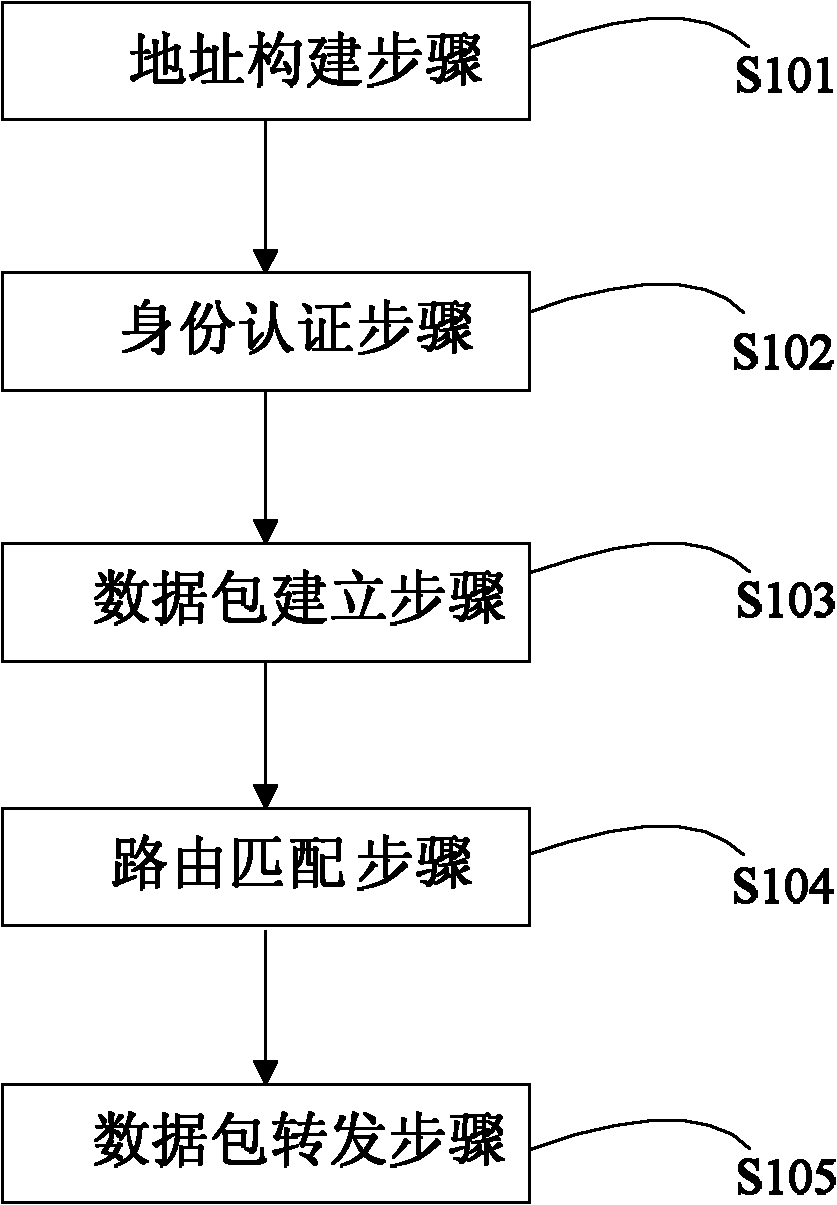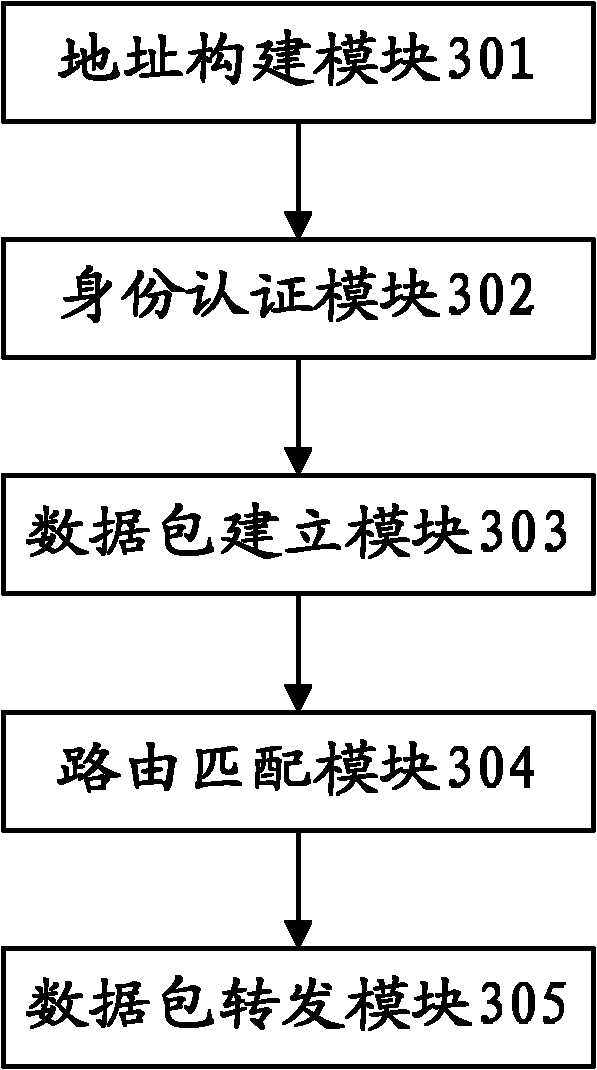Routing method and system based on integrated separation of identity domain and position domain
A technology of identity domain and location domain, which is applied in the routing field based on the separation of integrated identity domain and location domain, can solve the problems of heavy workload of protocol and application modification and difficulty in large-scale use, so as to improve security and avoid The effect of identity forgery
- Summary
- Abstract
- Description
- Claims
- Application Information
AI Technical Summary
Problems solved by technology
Method used
Image
Examples
Embodiment 1
[0026] The routing method of separating the identity domain and the location domain in this embodiment is based on the following address structure. The address structure is composed of the identity domain and the location domain. The identity domain is used to identify the host identity, and the location domain is used to identify the specific network port location. The identity domain is equal to The default network port of the host, the identity domain and the location domain use IPv4 addresses. Specific methods such as figure 1 As shown, the following steps are included: address construction step S101, constructing a network port address separated from a host identity domain and a location domain. In identity authentication step S102, the authentication center verifies the identity of the host and decides whether to allow it to access the network. The data packet building step S103, after the verification is passed, the data packet is built according to the address informa...
Embodiment 2
[0028] The routing method in this embodiment is basically the same as that in Embodiment 1, except that the specific method used in the address construction step in this embodiment is: the host network port address is composed of an identity field and a location field, and the identity field of each network port Both are the default network port address of the host, and the location field of each network port is the address of the respective network port.
Embodiment 3
[0030] The routing method in this embodiment is basically the same as that in Embodiment 2, the only difference is that this embodiment adopts such figure 2 The shown method specifically includes: requiring authentication step S201, the authentication center sends an authentication request to the user, and requests the user to reply authentication information. Authentication information reply step S202, after receiving the authentication request, the host where the user resides returns the authentication information through a default address whose location field is equal to the identity field. Authentication confirmation step S203, after receiving the reply message, the authentication center verifies whether the address identity field and the location field of the reply message are equal, if they are equal, the new address is allowed to access the network, if not equal or the reply message is not received, it is forbidden Connect to the network.
PUM
 Login to View More
Login to View More Abstract
Description
Claims
Application Information
 Login to View More
Login to View More - R&D
- Intellectual Property
- Life Sciences
- Materials
- Tech Scout
- Unparalleled Data Quality
- Higher Quality Content
- 60% Fewer Hallucinations
Browse by: Latest US Patents, China's latest patents, Technical Efficacy Thesaurus, Application Domain, Technology Topic, Popular Technical Reports.
© 2025 PatSnap. All rights reserved.Legal|Privacy policy|Modern Slavery Act Transparency Statement|Sitemap|About US| Contact US: help@patsnap.com



